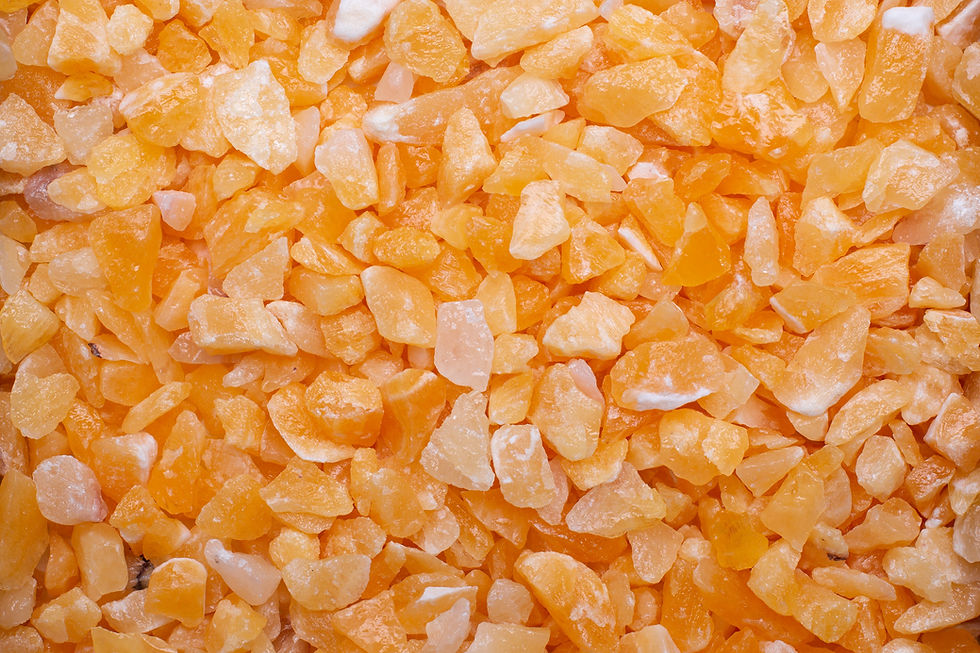
Calcite
General Information
History
Calcite, also called limespar, is a very common rock-forming mineral, there are said to be over 300 different kinds of calcite scattered across the globe. The name Calcite is derived from the Latin calx and the Greek chalix, which mean lime (as in limestone as calcite is a component of it). Calcite has more uses than almost any other mineral. It is used as a pigment, a construction material (in the form of limestone and marble), within farming as agricultural soil treatment, within the world of pharmacy and as acid neutraliser in the chemical industry to name a few. High grade calcite was also used during World War II for gun sights, bomb sights and anti-aircraft weaponary. As a constituent of marble and limestone you can see calcite all over the world and in many of the world’s monuments.
This mineral was incredibly significant to the Ancient Egyptians who used it to adorn the tombs of their Pharaohs. Because of its association with the element of Earth they believed that it was able to clear energy blockages and amplify the energies of their sacred artefacts and stones.
Geography
Calcite is a form of sedimentary rock and is found all over the world, almost all the sedimentary deposits found around the globe have large quantities of calcite deposits.
Geology
Calcite is found all over the world in a variety of forms and colours, often in combination with other minerals (which is what would dictate the colour of this stone). The more common forms of Calcite are Orange, Blue, Green and Yellow, Iceland Spar is a clear double refractive variety that forms natural rhomboids. Banded calcite is formed when calcium carbonate separates from a solution of dissolved calcium carbonate and groundwater. The calcium carbonate is deposited in an opening or fissure in the mother rock and parallel bands are then formed as more calcium carbonate separates out. What causes the colour banding is believed to be changes in the chemical composition of groundwater during precipitation (seperation). Interestingly, Calcite and Aragonite are identical in chemical makeup, but crystallise differently to give us different crystals. Typically forming in pyramid shaped crystals or grains this beautiful stone can occasionally be found in more complex forms such as “flowers” and is transparent to translucent.
Physical Properties
Appearance
Pure calcite would appear as colourless, it is the presence of impurities that can tint it to a variety of colours. Calcite can be found in an incredibly wide spectrum of colours including but not limited to orange, blue, green, pink, red and yellow and can be found in translucent to opaque varieties.
Moh's Scale
Calcite is a relatively soft crystal measuring a 3 on the Mohs scale, because of its softness this stone is easily carved which is why you see it so often carved into fun and fancy shapes, cups, bowls and even lamps.
Cleaning & Care
Calcite is brittle and soft and so should be stored accordingly. Should your calcite become dirty you can simply clean it by rubbing it lightly with a clean, soft, untreated cloth. If needed you can clean it with a soft cloth and warm, soapy water to remove any dirt clinging to the stone before drying carefully. Note that this stone is particularly sensitive to any form of acid, as a result it should only be exposed to pure water as it would be soluble in rainwater which is slightly acidic. For this reason it should also not be used in gem elixirs.
Spiritual Care
Essential Uses
Calcite is an energiser that can combat fatigue, procrastination and laziness. Known as a mind stone it heightens mental clarity, making it particularly helpful in study. A powerful amplifier and cleanser of energy calcite cleans negative energies from the environment and facilitates the opening of higher consciousness. Particularly useful for meditation it connects the emotions with the intelligent and calms the mind, teaching patience and discernment and boosting memory.
Our Family Uses
N/A
